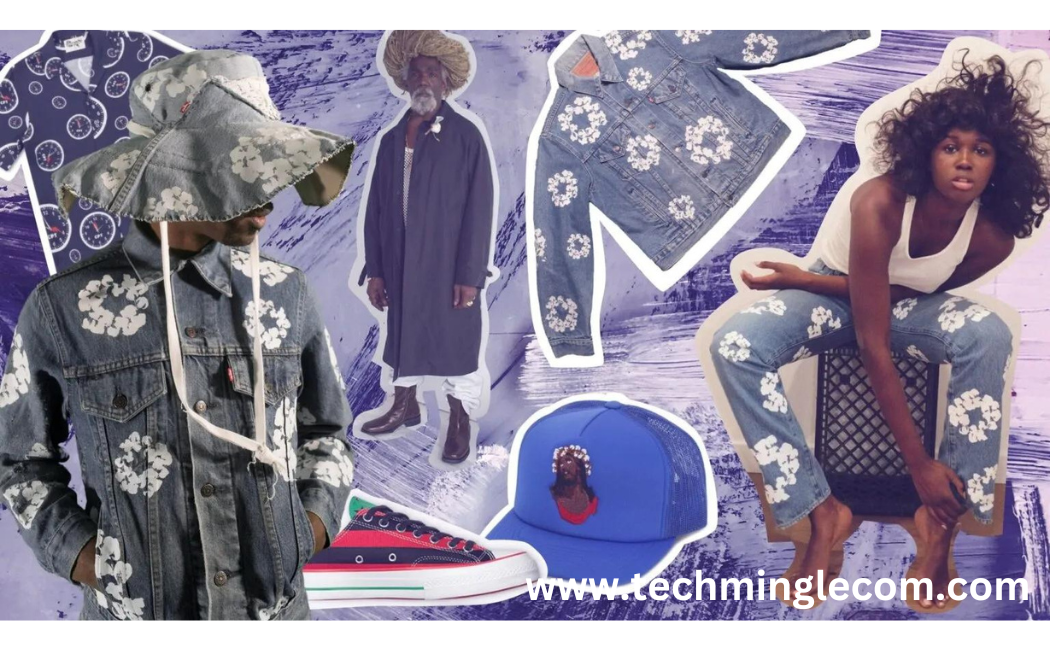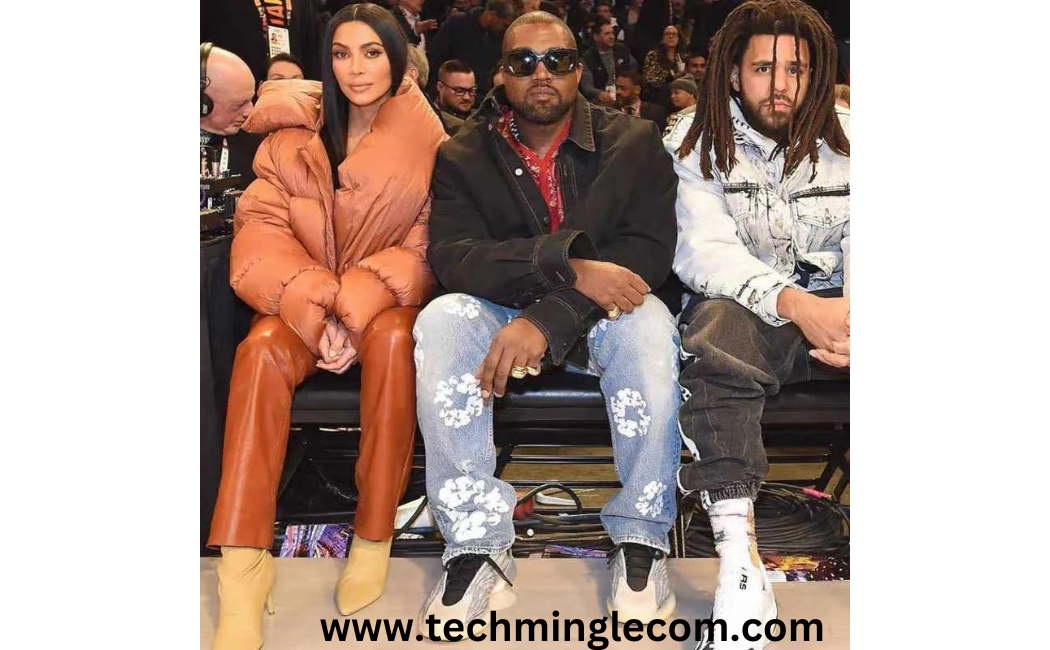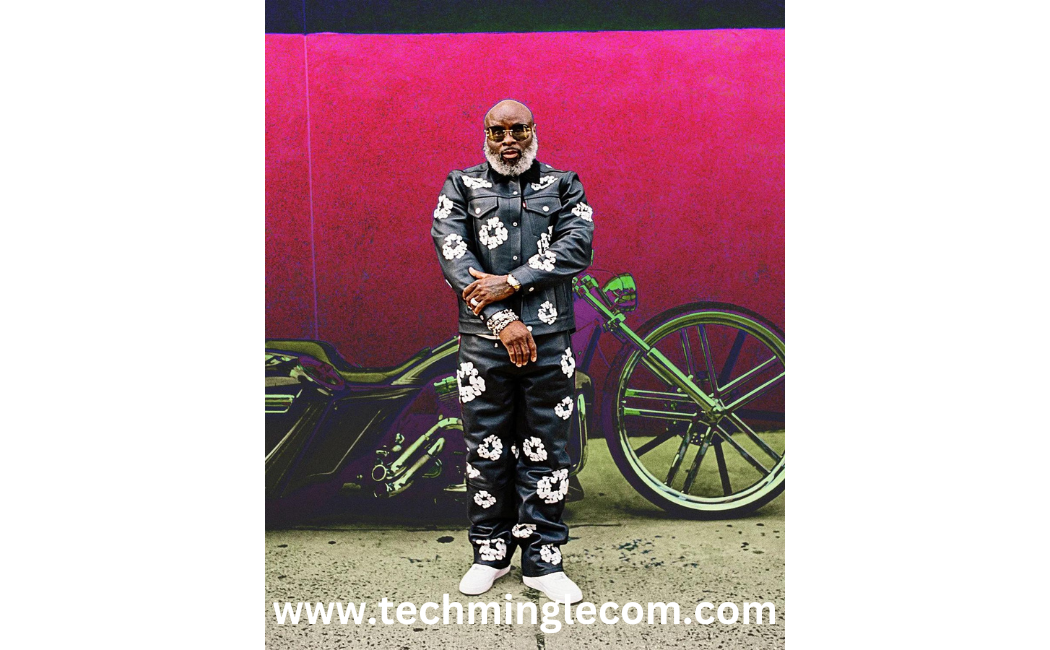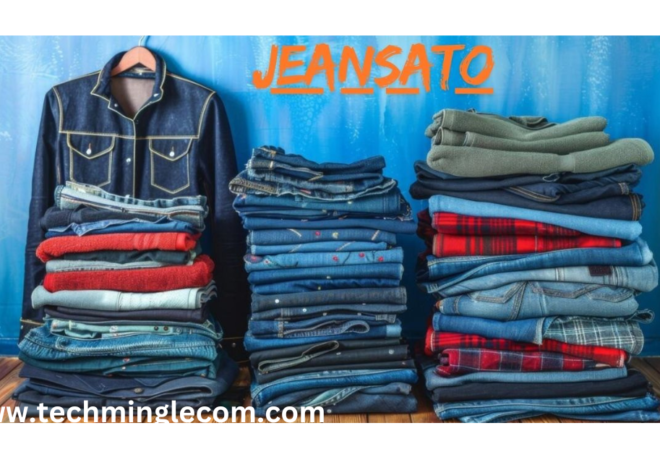
Denim Tears:100% Breaking Down the Cultural Significance
Introduction to Denim Tears
Denim tears, though often seen as a sign of wear and tear, hold deeper significance in the realm of fashion and culture. Understanding their origins, causes, and remedies is crucial for anyone passionate about denim.
What are Denim Tears?
Denim tears refer to the rips, frays, or holes that develop in denim fabric over time. They can occur naturally through use or be deliberately created for stylistic purposes.
The History of Denim Tears
Denim tears have a rich history rooted in functionality, rebellion, and cultural evolution. Understanding their origins provides insight into their enduring significance in fashion and beyond.

Origins in Workwear
Denim fabric, originally known as “jean” fabric, emerged in the late 19th century as durable workwear for laborers and miners in the United States. Its robust cotton twill weave and indigo dye made it ideal for rugged environments where durability and comfort were essential.
Functional Necessity
In its early days, denim tears were not just commonplace but often expected. Workers in demanding industries subjected their jeans to harsh conditions, leading to natural wear and tear. These tears were signs of hard work and authenticity, reflecting the wearer’s livelihood and dedication to their craft.
Rise in Popularity
During the mid-20th century, denim transitioned from workwear to a symbol of youth rebellion and casual fashion. Icons like James Dean and Marlon Brando popularized denim jeans as symbols of nonconformity and youthful independence. Denim tears, once a result of laborious work, became sought-after symbols of rugged individualism and laid-back style.
Evolution in Fashion
By the 1970s and 1980s, distressed denim emerged as a deliberate fashion statement. Designers and brands began intentionally distressing jeans to achieve a worn-in look associated with authenticity and rebellion against mainstream fashion. Techniques such as sanding, whiskering, and ripping contributed to the aesthetic appeal of denim tears, transforming them from practical necessity to desirable fashion trend.
Contemporary Significance
Today, denim tears continue to resonate in fashion and culture. They are celebrated for their ability to convey a sense of history, personal narrative, and style. Whether as a vintage-inspired fashion choice or a nod to the authenticity of classic workwear, denim tears remain an enduring symbol of resilience, individuality, and the evolving relationship between fashion and identity.
Why Denim Tears Are Important
Denim tears hold significant cultural and fashion importance, transcending their practical implications. Here are key reasons why denim tears matter:

Authenticity:
Denim tears are often associated with authenticity and a lived-in aesthetic. They signify a garment that has been worn and loved, reflecting the wearer’s experiences and adventures. This authenticity appeals to those who value individuality and personal style over mass-produced perfection.
Fashion Statement:
In the realm of fashion, distressed denim has become a timeless trend. Designers and fashion enthusiasts alike embrace denim tears as a form of self-expression and rebellion against conventional norms of pristine clothing. Distressed jeans are celebrated for their casual, effortlessly cool vibe that resonates with diverse audiences.
Cultural Significance:
From their humble origins as workwear in the early 20th century to icons of counterculture movements, denim jeans have evolved into symbols of cultural identity and social change. Denim tears embody this rich cultural heritage, connecting wearers to a broader narrative of resilience, innovation, and personal expression.
Emotional Attachment:
For many individuals, denim tears hold sentimental value. They evoke memories and emotions associated with significant life moments, making each tear a tangible reminder of personal journeys and milestones. This emotional attachment enhances the perceived value of denim garments beyond their functional purpose.
Sustainability:
Embracing denim tears as a fashion choice promotes sustainability by extending the lifespan of clothing. Instead of discarding torn jeans, repairing them or wearing them with pride contributes to reducing waste and conserving resources. This sustainable approach aligns with current trends towards eco-conscious consumerism and responsible fashion practices.
Understanding the Cultural Impact

Fashion and Denim Tears
Fashion designers often incorporate denim tears into their collections to evoke a sense of nostalgia and authenticity. From high-end brands to streetwear labels, distressed denim remains a perennial favorite.
Emotional Resonance
For many, denim tears hold sentimental value, symbolizing memories associated with favorite garments and personal journeys. Each tear tells a story of the wearer’s experiences and adventures.
How to Recognize Denim Tears
Identifying denim- tears is straightforward: look for frayed edges, visible holes, or thinning patches in the fabric. These characteristics distinguish distressed denim from its pristine counterparts.
Causes of Denim Tears
Denim tears can occur due to several factors, influencing the fabric’s durability and appearance over time. Understanding these causes helps in both preventing and managing denim- tears effectively.
Wear and Tear
The most common cause of denim- tears is regular use and friction. Areas such as the knees, thighs, and seat of jeans are particularly prone to wearing out due to repeated movements and contact with surfaces. Over time, this wear weakens the fabric, leading to tears and frays.
Quality of Denim
The quality of the denim fabric itself plays a significant role in its susceptibility to tears. Lower-quality denim, often made from thinner or less durable fibers, tends to tear more easily compared to higher-quality denim woven from stronger yarns. Choosing denim from reputable brands known for their craftsmanship and use of premium materials can help reduce the likelihood of tears.
Environmental Factors
External elements such as exposure to harsh weather conditions, abrasive surfaces, or chemicals can accelerate denim deterioration. Sunlight, humidity, and improper storage conditions can also weaken denim fibers, making them more prone to tearing.
Design and Fit
The design and fit of denim garments can influence tear formation. Tight-fitting jeans, especially those with minimal stretch or flexibility, may experience more stress on certain areas, leading to tears. Similarly, the design features such as distressed styles or intentional abrasions can weaken the fabric structure, contributing to tears over time.
Preventing Denim -Tears
Preventing denim tears involves adopting proactive care and maintenance practices to prolong the life and appearance of your favorite denim garments. Here are effective strategies to help preserve your denim:

Proper Care and Maintenance
Gentle Washing:
Wash denim inside out in cold water using a mild detergent. This helps preserve the color and minimizes stress on the fabric.
Avoid Excessive Heat:
When drying denim, opt for air-drying or use a low heat setting in the dryer. High temperatures can weaken fibers and contribute to tears.
Limit Washing:
Denim doesn’t need frequent washing. Spot clean stains and odors when possible to reduce unnecessary wear.
Choosing Quality Denim
Invest in Quality:
Opt for denim from reputable brands known for using durable materials and superior craftsmanship. High-quality denim is less prone to tears and retains its shape better over time.
Check Fabric Composition:
Look for denim blends that include strong fibers like cotton or elastane, which enhance durability and comfort.
Proper Fit and Usage
Avoid Overstretching:
Select denim with a comfortable fit that allows for movement without excessive strain on the fabric. Avoid wearing jeans that are too tight, as this can accelerate wear and tear.
Rotate Your Wardrobe:
Regularly rotate between different pairs of jeans to minimize excessive wear on specific garments. This practice enables each pair to rest and recuperate between uses.
Storage and Handling
Store Properly:
Hang denim on sturdy hangers to maintain shape and prevent creasing. Avoid folding jeans in areas that can lead to permanent creases or weaken the fabric.
Handle with Care:
When putting on or taking off denim, be mindful of pulling or tugging at seams and pockets, as this can contribute to tears over time.
Repairing Denim Tears
Repairing denim- tears allows you to extend the life of your favorite jeans and restore them to their original condition. Whether you prefer DIY methods or seek professional assistance, here are effective ways to repair denim- tears:
DIY Methods
Patch and Stitch:
For small tears or holes, use iron-on denim patches or fabric patches designed for jeans. Follow the instructions provided with the patches to ensure secure adhesion. Alternatively, stitch the edges of the tear using a strong, matching thread to reinforce the fabric.
Sashiko Stitching:
Embrace the art of Japanese sashiko stitching to repair denim -tears with decorative stitches. Sashiko stitching not only reinforces the tear but also adds a unique, artisanal touch to your jeans.
Denim Glue:
Specialized denim glue can be used to mend minor tears quickly. Apply a small amount to the torn edges and press them together firmly. Allow the glue to dry thoroughly according to the manufacturer’s instructions.
Professional Repair Services
Denim Tailors:
Seek assistance from experienced denim tailors or repair specialists who specialize in handling denim fabrics. They can assess the tear’s severity and employ professional sewing techniques to ensure a seamless repair.
Designer Services:
For high-end or designer denim pieces, consider utilizing repair services offered by the brand or manufacturer. They have access to original materials and techniques necessary to maintain the garment’s authenticity and quality.
Conclusion
Denim tears are more than just imperfections; they are symbols of authenticity, style, and personal history. Understanding their significance in fashion and culture enhances our appreciation for this timeless fabric.
FAQs About Denim Tears
What causes denim tears?
Denim- tears can result from regular wear and tear, low-quality fabric, or deliberate distressing techniques.
Can denim tears be repaired?
Yes, denim tears can often be repaired using DIY methods or by professional denim repair services.
Are denim tears a fashion trend?
Yes, distressed denim remains a popular fashion trend, celebrated for its casual, lived-in look.
How can I prevent denim tears?
Proper care, such as gentle washing and avoiding harsh drying methods, can help prevent denim tears.
What do denim tears symbolize?
Denim tears symbolize authenticity, personal history, and the enduring appeal of rugged, lived-in style.


